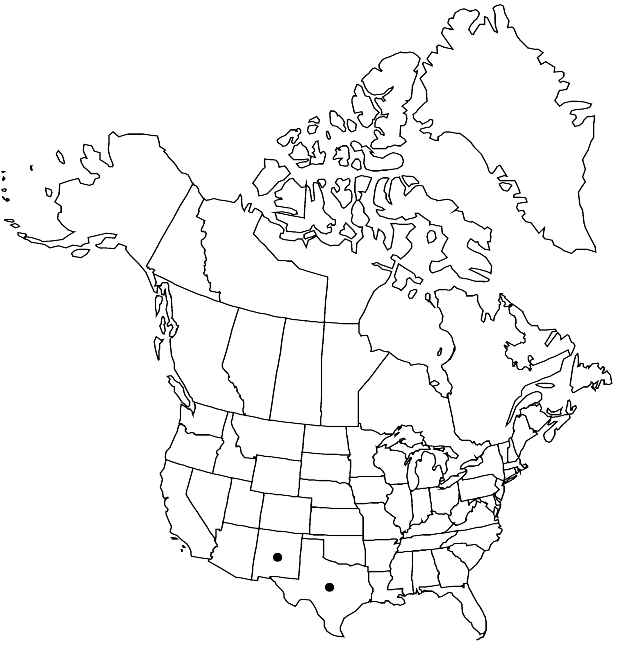Boechera texana
Harvard Pap. Bot. 11: 85. 2006.
Perennials; long-lived; sexual; caudex woody. Stems usually 1 per caudex branch, arising from center of rosette, often slightly elevated above ground surface on woody base, 2–5 dm, glabrous throughout. Basal leaves: blade oblanceolate, 5–12 mm wide, margins dentate, ciliate (at least proximally), trichomes (usually simple), 1–2 mm, surfaces moderately pubescent, trichomes short-stalked, 2–4-rayed, 0.4–0.6 mm. Cauline leaves: 5–12, often concealing stem proximally; blade auricles 1–2 mm, surfaces distally glabrous. Racemes 10–35-flowered, usually unbranched. Fruiting pedicels horizontal to divaricate-ascending, curved or angled downward, 10–20 mm, glabrous. Flowers divaricate-ascending at anthesis; sepals glabrous; petals white to lavender, 5–8 × 1.5–2 mm, glabrous; pollen ellipsoid. Fruits widely pendent, not appressed to rachis, not secund, curved to nearly straight, edges parallel, 3.5–5 cm × 2.5–3 mm; valves glabrous; ovules 80–130 per ovary; style 0.2–0.7 mm. Seeds biseriate, 1.1–1.3 × 0.9–1 mm; wing distal or continuous, 0.1–0.15 mm wide.
Phenology: Flowering Apr.
Habitat: Rock outcrops and gravelly soils in desert grassland and evergreen woodlands
Elevation: 1200-1700 m
Distribution

N.Mex., Tex.
Discussion
Boechera texana is a sexual diploid included within Arabis fendleri var. fendleri by R. C. Rollins (1993), but it appears to be sufficiently distinct to warrant recognition at species level (see M. D. Windham and I. A. Al-Shehbaz 2006 for detailed comparison). There is little or no geographic overlap between the two, with B. texana confined to western Texas and southern New Mexico and B. fendleri ranging from western New Mexico and the Four Corners region through northern Arizona to southern Nevada.
Selected References
None.